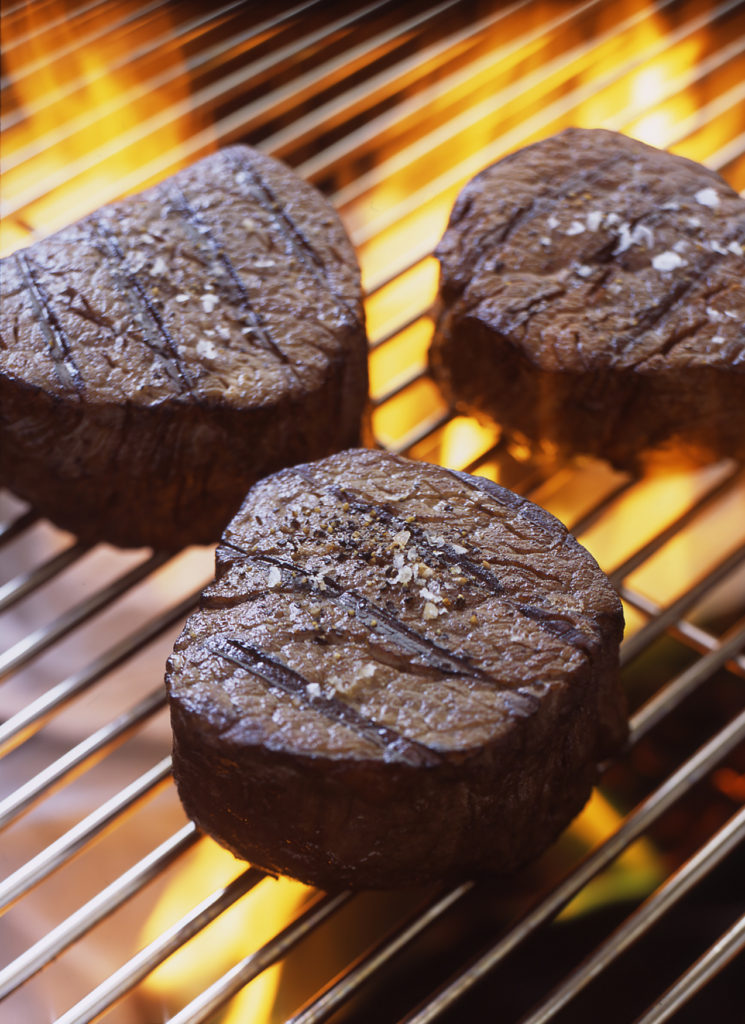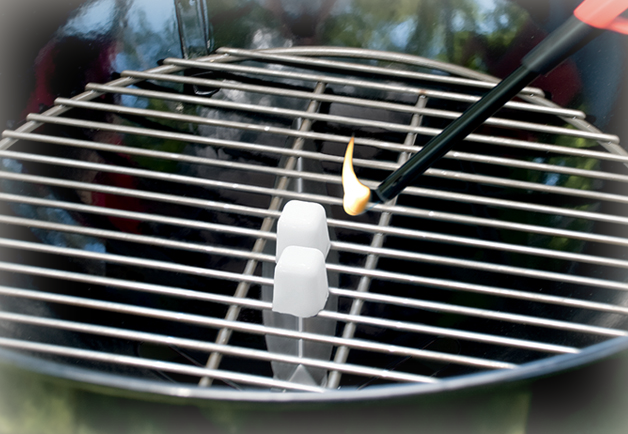The charcoal-grilled steak you’ve been craving all week long finally hits your plate hot and ready on a lazy Sunday afternoon. It’s your reward for five long days of earning a living, and it’s the inducement that eases you into another stint of hard labor in the coming days.
Imagine your disappointment when your first bite tastes like this beautiful piece of beef was French-dipped in jet-fuel before being served. The acrid flavor permeates the meat and obliterates every nuance of delicious beefiness that had you salivating just moments before.

Back in the day, starting a charcoal fire in a grill usually meant having that squarish tin can of lighter fluid at the ready to drown hardwood lump and briquettes. And, yes, we know about those of you who recklessly eschewed lighter fluid for real-deal pyrotechnics by using gasoline or kerosene.
Not only were those methods dangerous, they made anything grilled over it taste awful. Unfortunately, that was what we were used to, all we knew, and that taste was just part of the outdoor-cooking experience.
Nowadays, we know better, or at least we should. A number of notable options for starting a fire are safer, more environmentally sound, and do not adversely affect the taste of the grilled food. In fact, they showcase the natural flavors of what is being cooked.
Chimney Starter

A chimney starter is one of the best and most dependable methods of lighting a charcoal fire. Essentially, the starter is a dual-chamber, vented, vertical cylinder that has an upper section for filling with lump charcoal or briquettes and a lower section, separated from the upper section by a grate, for stuffing with newspaper.
A fully loaded chimney will have you ready to go in 20 to 30 minutes. Just fill it up, set it inside your grill or on a fire-safe surface, light it from the bottom in several places, and go get yourself a cold drink. The fire is ready when the top-most coals are covered in a fine, white ash. At that point, dump the coals into the fire pit, spreading them out for either a direct-heat or indirect-hear fire.
Electrical Charcoal Lighters

Electric Charcoal Starter, image courtesy of Char-Broil
This appliance consists of a loop-shaped, wand-style heating element that ignites coals on contact. Start with a small pile of charcoal covering the element, plug it in and, after the initial 8 minutes or so, you’ll have glowing coals. Now, mound up the rest of the unstarted coals and wait about another 15 minutes.
The style of starter is dependable and convenient, as long as you have a nearby electric outlet.
Also in the electric vein, the newest addition to fire-starting accessories is a style of hand-held torch that shoots a stream of hot air—about 1,100ºF—heating coals on contact within seconds.
Fat Wood
Fat wood is resin-rich sticks that come from the stumps of felled pine trees, largely from the Southeastern U.S. It is one of the oldest firestarters—first uses date to pre-historic times.
The sap in pine trees contains a volatile compound known as terpene. As the tree stump ages, the viscous sap evaporates and eventually hardens into resin. One advantage of fat wood is that is will burn at any stage of the aging process, even when wet.
Starter Cubes

Lighter Cubes, image courtesy of Weber Grills
Our very good friends at Weber Grills make another type of starter that works equally well in the backyard with a grill as on the trail for starting a camp fire.
Made of paraffin, the cubes are packaged in an ice-cube tray style packaging, so they are easily dispensed by pressing from the bottom until the cube pops out.
They can be used with charcoal only, but they are at their best when substituting for newspaper in the bottom of a chimney starter.
Backpacker Savvy
What’s more useless than clothes dryer lint?
Well, if you are out in the wilderness, clothes dryer lint could be worth its weight in gold when you need a source of heat. Ask any experienced backpacker and apply the technology to your backyard grill.
One method: Take an egg carton, and stuff each compartment with a wad of dryer lint and fill with melted paraffin. Let it harden and then break each cube out separately.
And if you run out of clothes dryer lint, sawdust or cotton balls are good substitutes.
One Last Note About Lighter Fluid
If after all, you still decide to use lighter fluid, be sure you are safe about it.
Never, ever, ever spray or pour lighter fluid onto a bed of burning coals or embers. This could ignite the stream of lighter fluid causing the bottle or can to explode in your hands.
How do you start your charcoal fire? What do you like best about that method? Do you use lump charcoal, briquettes, or both? How fast is your method?



Leave Your Response